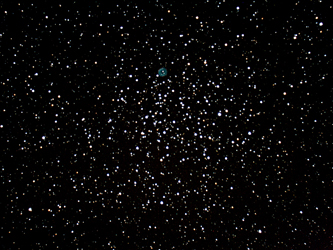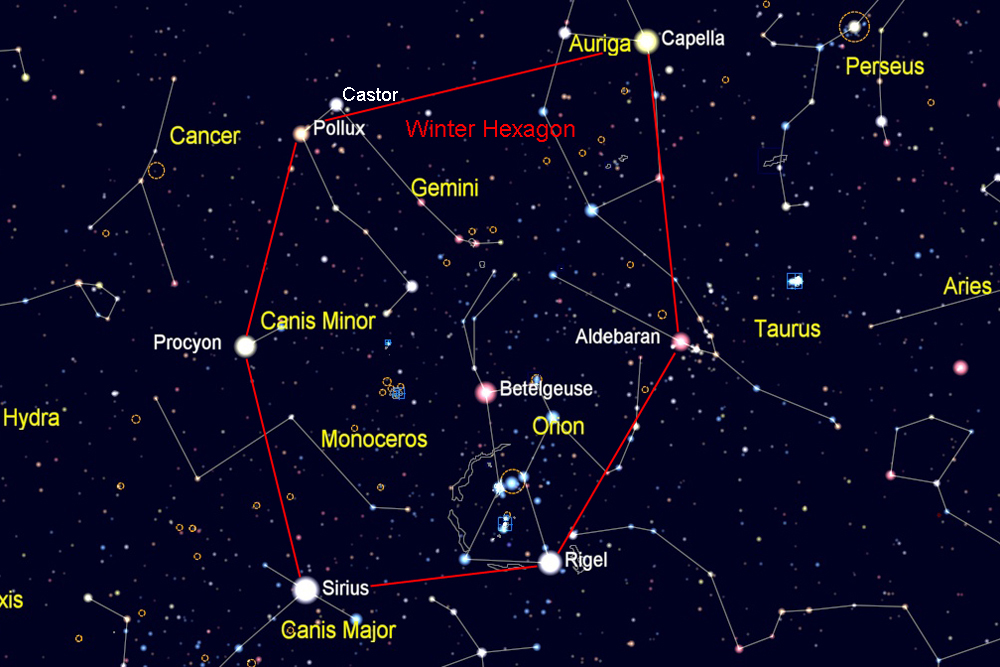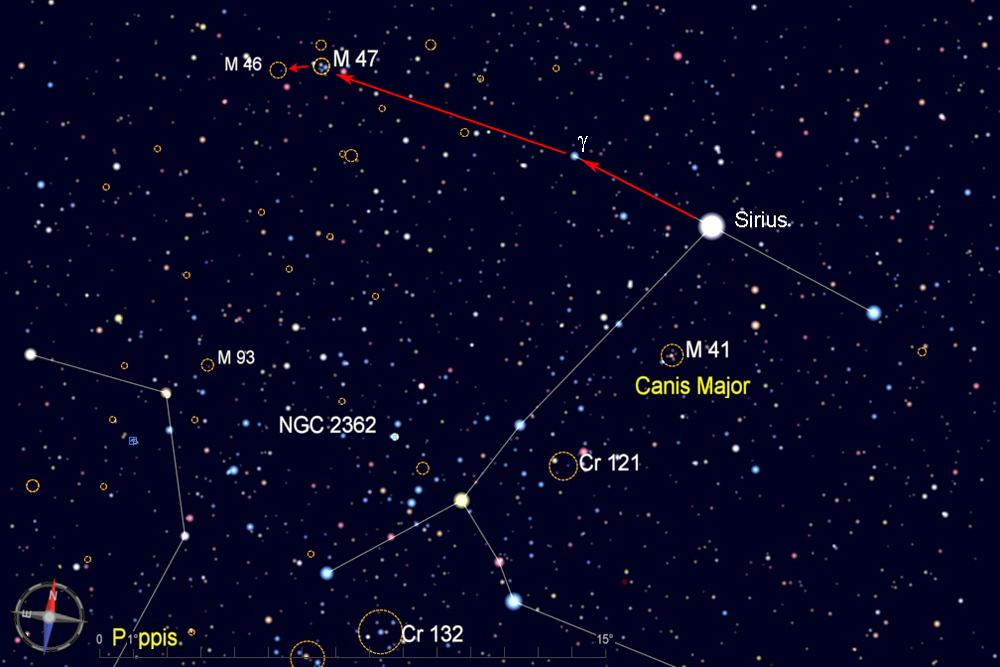 .
.Find the Winter Hexagon, which is composed of six of the brightest stars in the sky--Sirius, Procyon, Pollux, Capella, Aldebaran, and Rigel. On mid-winter evenings, these stars form a large oval stretching from low in the south to nearly overhead. As spring begins, the Winter Hexagon sinks toward the west. The constellation Orion and its bright red star Betelgeuse are inside the Hexagon.
For this star hop, find Sirius, the brightest star in the sky.

Look 5 degrees to the northeast of brilliant Sirius to find a much dimmer star, 4th magnitude γ Canis Majoris, which represents the eye or head of the big dog. From γ, follow roughly this same line twice as far to the northeast and you will arrive at the location of M47. There are no bright stars in the vicinity, but fortunately M47 is bright enough to be easily spotted in binoculars or a finderscope. After viewing M47, move slightly more than 1 degree to the east to find M46.
 .
.